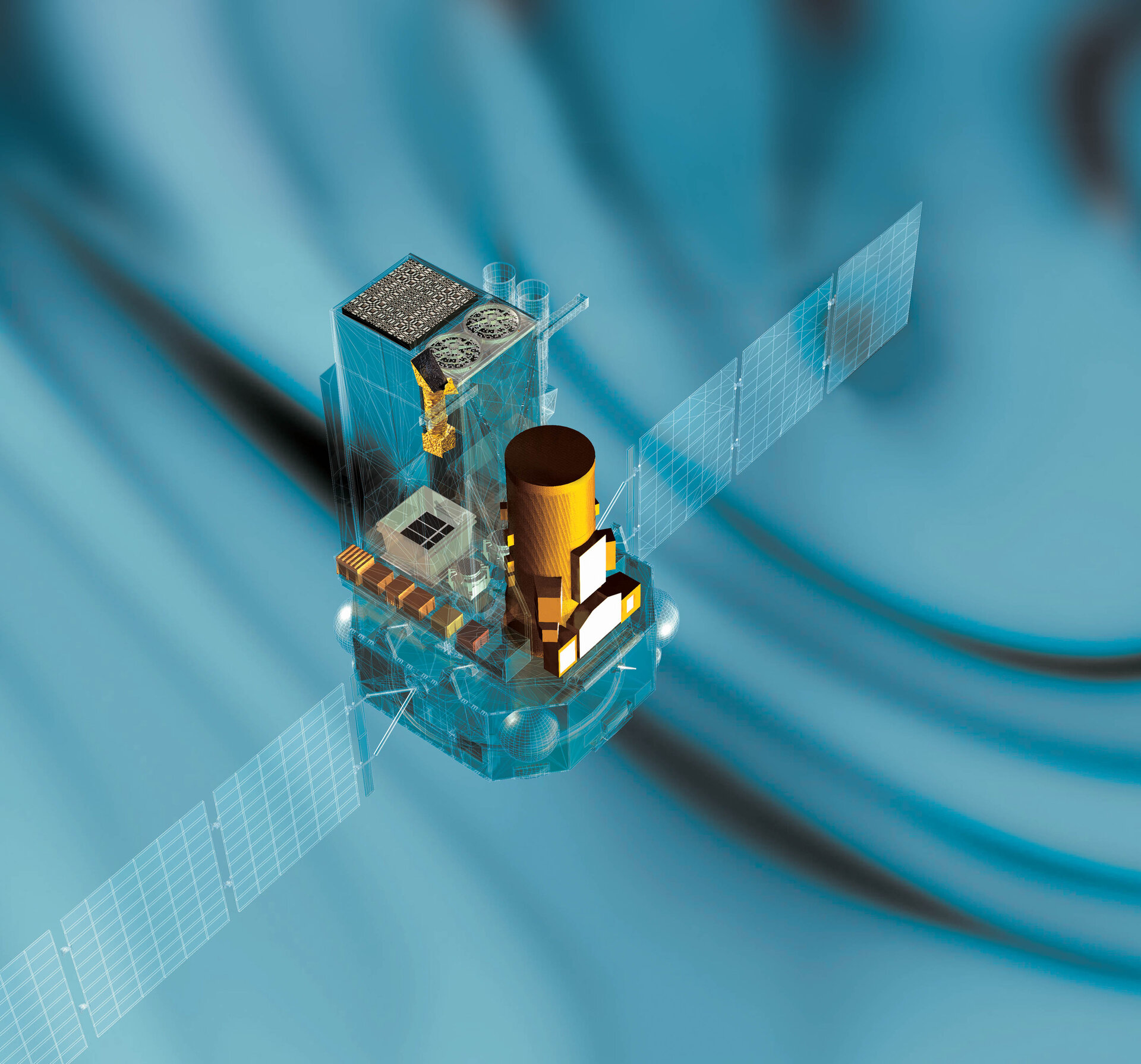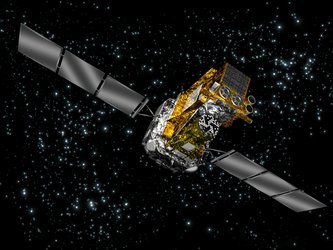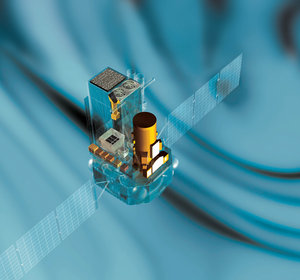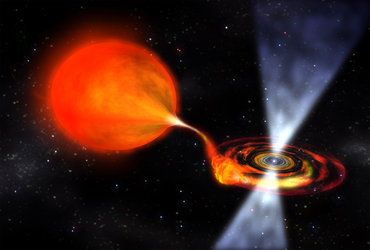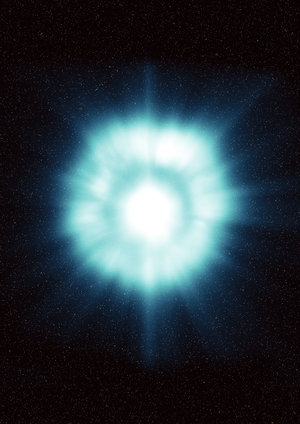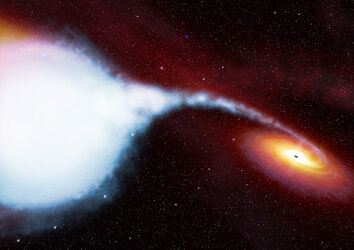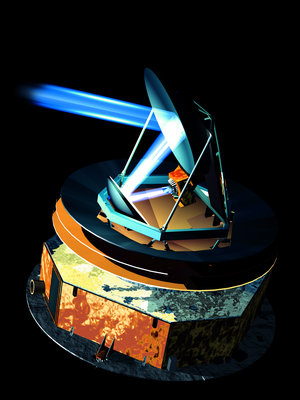Integral overview
Name: Integral (International Gamma-Ray Astrophysics Laboratory)
Status: In operation (launched in 2002)
Mission theme: Tracking violent events across the Universe
Mission objectives
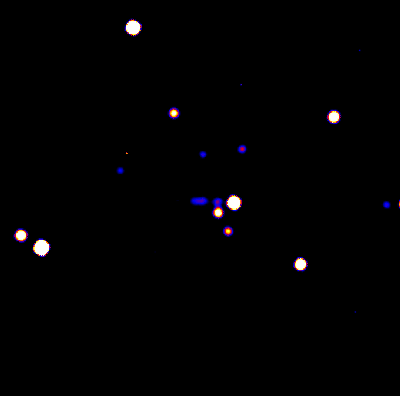
Integral is the first space observatory that can observe celestial objects simultaneously in gamma rays, X-rays and visible light. Its principal targets are violent explosions known as gamma-ray bursts, powerful phenomena such as explosions of stars, and regions of the Universe thought to contain black holes.
Earth's atmosphere acts as a shield to protect us from dangerous cosmic gamma rays – which are even more powerful and penetrating than the X-rays used in medical examinations radiation. But this means that gamma rays from space can only be detected outside Earth’s atmosphere. When it launched in 2002, Integral was the most advanced gamma-ray observatory ever created; it has enabled astronomers to observe distant events that shape the Universe and better understand how matter behaves in extreme conditions.
What’s special?
Integral is the most sensitive, accurate, and advanced gamma-ray observatory ever launched, allowing us to better understand the Universe’s most violent objects.
It sounds paradoxical: the events that made the Universe habitable were catastrophic. Billions of years ago, violent stellar explosions known as supernovae provided the energy needed to form the elements from which planet Earth and living things were eventually formed. What we want to know is how exactly these elements were made. To answer this question precisely, more research has to be done on new supernovae, and Integral’s gamma ray observations play a big role in providing the data we need.
Gamma rays also appear after supernovae when matter squirms in the intense gravity of the collapsed and very dense remnant that is left behind after a star’s outer layers are blasted into space. These compact objects include neutron stars and stellar mass black holes, and studying them is another of Integral’s important goals.

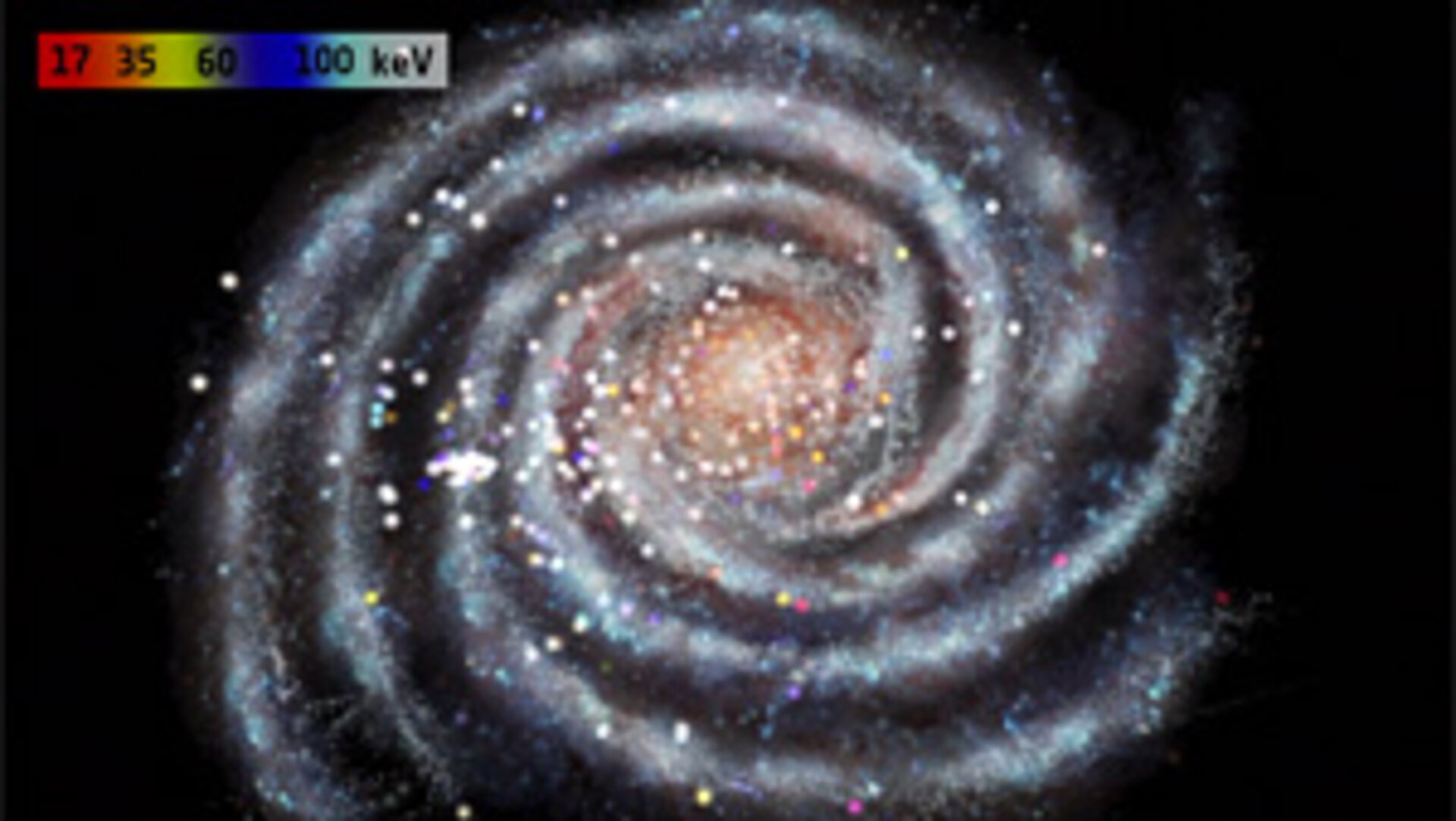
Access the video
The supermassive black hole at the centre of our own galaxy, the Milky Way, is another major source of gamma rays. Integral is helping us to unveil the history of this giant and enigmatic object and map the region of space around it. The mission has also found evidence of supermassive black holes at the centres of other galaxies and studied their properties.
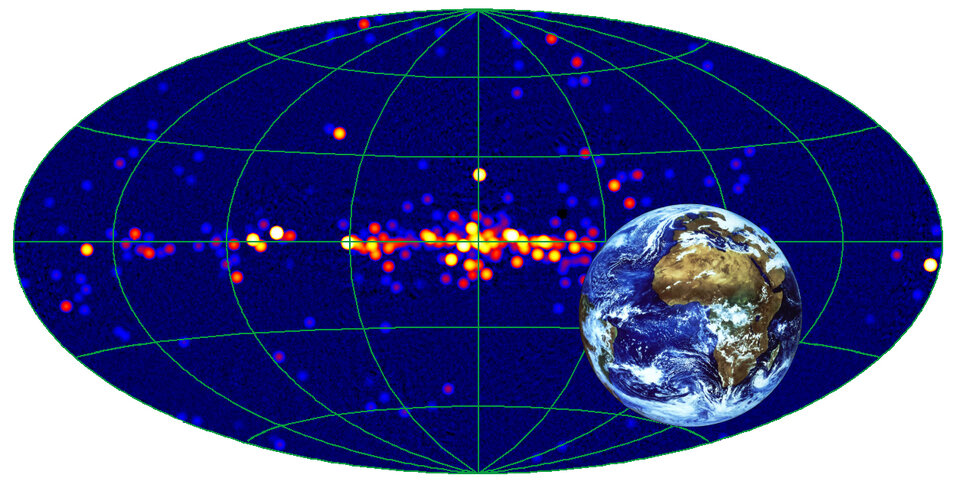
Even more mysterious than the energetic radiation coming from the centres of distant galaxies are the flashes of extremely powerful gamma rays that suddenly appear then disappear from a random location in the sky. Observations in different wavelengths confirm that these distant ‘gamma-ray bursts’ – which last milliseconds to hours, but each produce more energy than the Sun will over its entire lifetime – are the biggest explosions in the Universe. By observing gamma-ray bursts, Integral is helping us understand where they come from.
Fortunately for us, these gamma-ray bursts are very far away, but they are not the most distant objects Integral has seen so far. This record goes to quasars – gamma-ray lighthouses that Integral sees shining from the very edge of the Universe.
Spacecraft and instruments
Standing five metres high and weighing more than four tonnes, the Integral spacecraft is impressively large. The satellite has two main parts: the service module at the bottom contains all spacecraft subsystems required to support the mission; the payload module containing the scientific instruments is mounted on top of the service module.

Integral’s service module is a rebuild of the one developed for XMM-Newton, ESA’s X-ray observatory – the two missions had some similar requirements, making this a useful cost-saving measure. It is a closed structure made of composite material that is a combination of aluminium and carbon fibre. Inside are systems for solar power generation, power conditioning and control, data handling, telecommunications and thermal, attitude and orbit control.
The four scientific instruments of Integral’s payload module weigh two tonnes altogether, making this the heaviest science payload ever placed into orbit by ESA. Why so heavy? The detectors have a very large area so that they can capture sparse gamma rays, and a huge shield protects the detectors from background radiation in order to make them more sensitive.
Integral hosts two main instruments to detect gamma rays: a camera gives the sharpest gamma-ray images so far, whilst a spectrometer precisely assess the energy of the detected gamma rays. Two other instruments – an X-ray monitor and an optical camera – help to identify the gamma-ray sources.
Journey and orbit

Integral was launched with a Russian Proton rocket on 17 October 2002 from the Baikonur Cosmodrome in Kazakhstan. A powerful launcher was essential to put the heavy spacecraft into its unusual orbit.
The Proton used three booster stages to place the spacecraft into a low ‘parking’ orbit. The Proton upper stage put the satellite into a highly eccentric 'transfer' orbit. Then Integral's own propulsion system brought the spacecraft to its operational orbit.
Integral circles Earth in a highly elliptical orbit once every three days. Up until 2015, its lowest point was 13 000 km above Earth’s surface and its highest point was 153 000 kilometres. Since 2015, the orbit has become shorter and Integral comes closer to Earth’s surface; this ensures that the spacecraft can be safely disposed of in 2029.
Integral’s high and eccentric orbit guarantees long periods of uninterrupted observation away from Earth's radiation belts. This avoids the effects of background radiation which would interfere with the measurement of gamma rays.
The end of Integral’s journey is planned for early 2029, when a carefully designed re-entry into Earth’s atmosphere will ensure that ESA’s guidelines for minimising space debris are met.
History
Integral was selected by ESA in June 1993 as the second medium-size scientific mission (M2) of the Horizon 2000 programme. The mission was conceived as an observatory led by ESA with contributions from Russia (Proton launcher) and NASA (Deep Space Network ground stations).
Partnerships
Integral is a truly international mission with the participation of all ESA Member States plus the United States and Russia.
ESA appointed Italian aerospace company Alenia Aerospazio (now integrated into Leonardo) as industrial prime contractor, responsible for the design, integration and testing of the satellite. On board, four instruments from teams led by scientists in Italy, France, Germany, Denmark and Spain are gathering and analysing the gamma rays from space.


